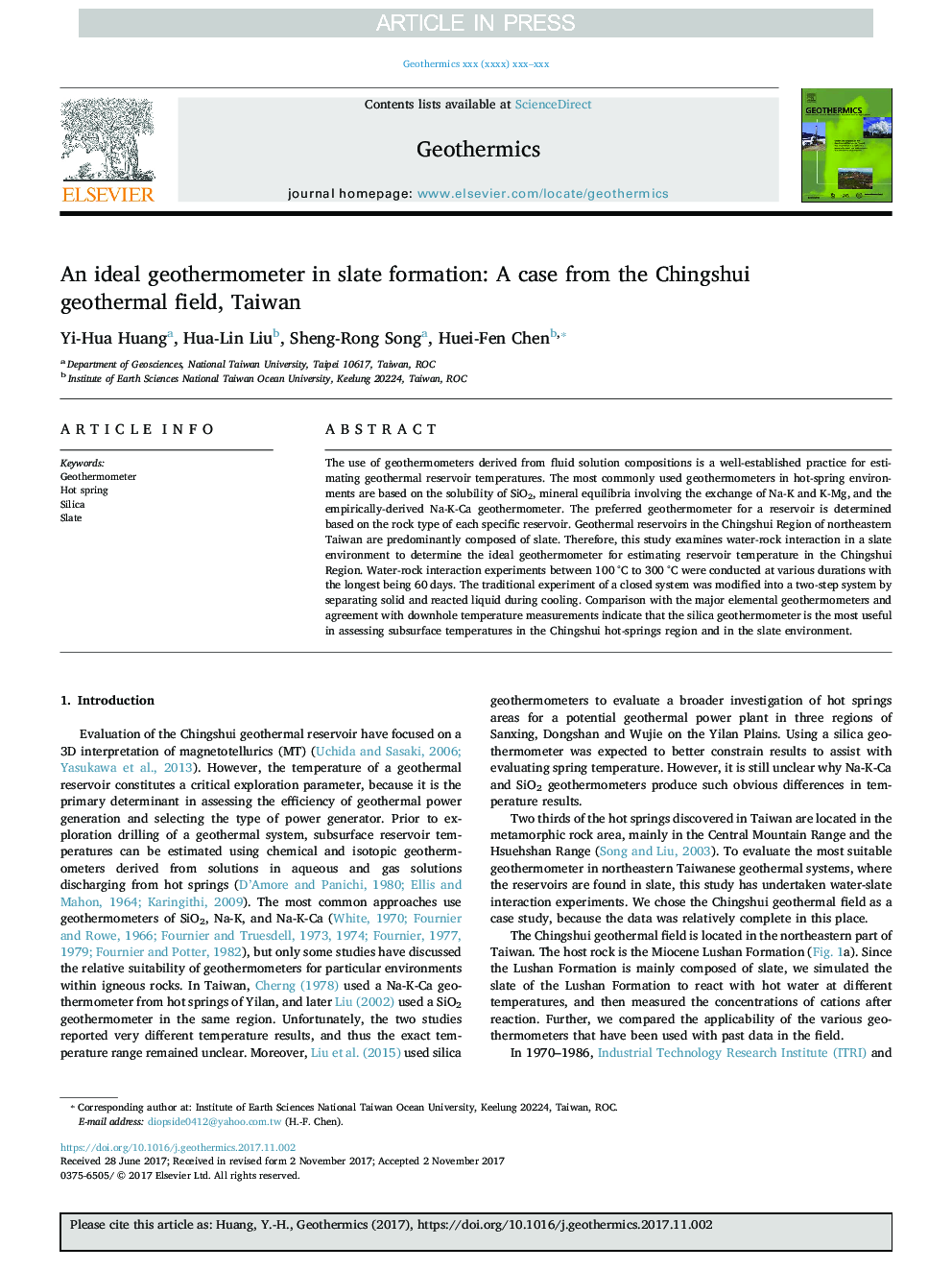| Article ID | Journal | Published Year | Pages | File Type |
|---|---|---|---|---|
| 8088628 | Geothermics | 2018 | 8 Pages |
Abstract
The use of geothermometers derived from fluid solution compositions is a well-established practice for estimating geothermal reservoir temperatures. The most commonly used geothermometers in hot-spring environments are based on the solubility of SiO2, mineral equilibria involving the exchange of Na-K and K-Mg, and the empirically-derived Na-K-Ca geothermometer. The preferred geothermometer for a reservoir is determined based on the rock type of each specific reservoir. Geothermal reservoirs in the Chingshui Region of northeastern Taiwan are predominantly composed of slate. Therefore, this study examines water-rock interaction in a slate environment to determine the ideal geothermometer for estimating reservoir temperature in the Chingshui Region. Water-rock interaction experiments between 100 °C to 300 °C were conducted at various durations with the longest being 60 days. The traditional experiment of a closed system was modified into a two-step system by separating solid and reacted liquid during cooling. Comparison with the major elemental geothermometers and agreement with downhole temperature measurements indicate that the silica geothermometer is the most useful in assessing subsurface temperatures in the Chingshui hot-springs region and in the slate environment.
Keywords
Related Topics
Physical Sciences and Engineering
Earth and Planetary Sciences
Geochemistry and Petrology
Authors
Yi-Hua Huang, Hua-Lin Liu, Sheng-Rong Song, Huei-Fen Chen,
